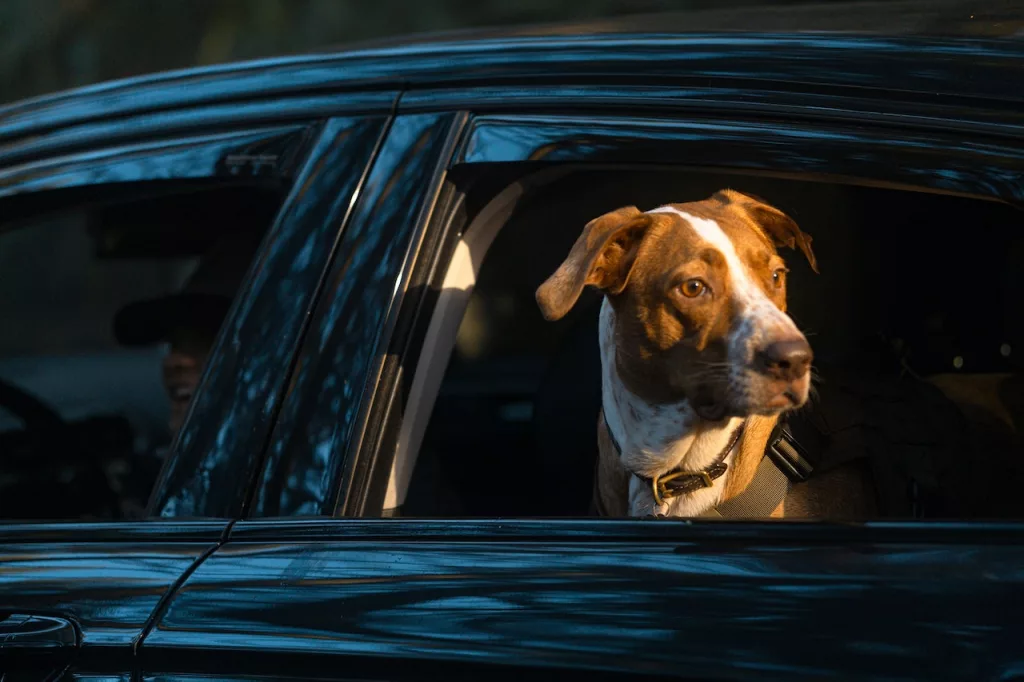Journeying with your beloved pets can often bring about anxiety for both you and your furry friends. Nevertheless, adhering to the following suggestions can facilitate a smooth and relaxed voyage!
- Practice makes perfect. Prior to setting off on an extended journey, test the waters with brief drives to gauge your pet’s reaction. Does it display signs of anxiety or motion sickness?
- Secure your pet. The AAA states that approximately 30,000 accidents annually are caused by an unsecured dog in the front seat. Unrestrained pets are not just a distraction for drivers, but also at a higher risk of injury if an accident occurs. Guarantee a safe journey by securing your pet using a pet barrier, seat belt, car seat, or travel crate.
- Ensure safety. While dogs may relish the sensation of the wind in their face, allowing them to stick their heads out the window may lead to ear damage or expose them to lung infections.
- Anticipate the unexpected. Affix an additional tag to your pet’s collar detailing the address and phone number of your destination. Also, it’s wise to carry your pet’s medical records in case of an emergency.
- Rest stops. The American Veterinary Medical Association recommends making a halt every two to three hours to allow your pet to relieve itself and stretch its legs.
- Hydration is key. Ensure you have a sufficient supply of cold water on hand to keep your pet adequately hydrated throughout the journey.
- Never leave pets unattended. On a day with temperatures reaching 30C degrees, the interior of a car with windows cracked open can hit 41C degrees in merely 10 minutes – a fatal scenario. If pets are prohibited at your destination, opt to leave them at a pet-friendly hotel or at home, rather than in the car.
Journeying with Your Pet
- Assess your pet’s health. Young, elderly, or unwell pets are best left at home. Certain breeds, such as brachycephalic or ‘snub-nosed’ dogs, prone to respiratory issues, are not ideal candidates for air travel in the cargo hold. Many major airlines have ceased to allow such breeds in their cargo compartments.
- Do your homework. Policies and charges differ among airlines and depend on whether your pet flies in the cabin or as checked baggage. Investigate an airline’s track record of animal transportation. Regrettably, incidents of pets being lost, injured, or dying during air travel have surged recently. Around 15 major airlines provide the Department of Transportation with monthly reports detailing pet-related incidents.
- Consider a pet-exclusive airline. Pet Airways offers a comfortable environment with climate-controlled cabins equipped with individual crates. A flight attendant checks on the animals every 15 minutes. Post-flight, pets can relieve themselves and be collected by their owners from the airline’s Pet Lounge at participating airports.
- Check travel regulations. If traveling internationally, determine the necessary vaccinations and quarantine requirements for your pet. The database of animal import requirements can provide more information.
- Labeling. Attach your contact details to both your pet’s collar and its carrier.
- Tire out your pet. Before the flight, play with your cat or take your dog for a walk. The more energy they expend, the more likely they will sleep during the journey.
- Keep calm and carry on. Cesar Millan suggests using lavender oil as a ‘calming scent’. In the weeks leading up to the flight, apply a drop of oil onto your hands during meal times or before walks. Once onboard, the familiar scent will help your pet relax.
Additional Travel Advice for Your Pets:
- Seek veterinary advice before a trip, especially if your pet hasn’t traveled before or if it has any health concerns.
- Bring along a beloved blanket or toy to provide comfort and familiarity for your pet during the journey.
- If your pet is prone to travel-induced anxiety, consider acquiring a Thundershirt. These snug shirts apply pressure to calming points and are a popular non-medical option for anxious pets, as recommended by veterinarians.
- Choose pet-friendly accommodations and destinations that welcome your four-legged friends. Websites like GoPetFriendly.com offer valuable resources on these topics and can even assist in planning your road trip.

